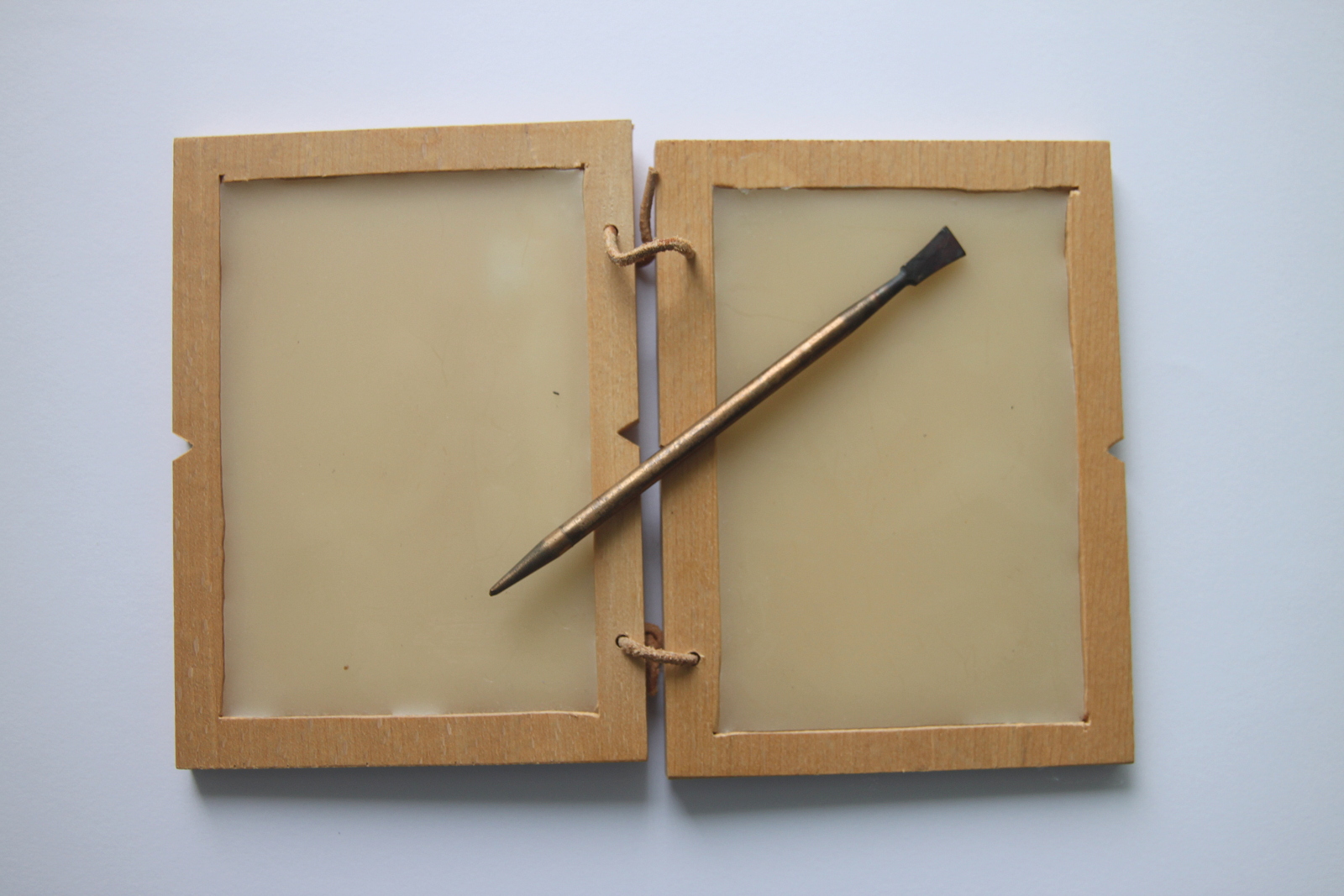I recently read an academic article suggesting that ancient Mesopotamian scribes wrote cuneiform not just on clay tablets, but also on wax-covered writing boards. I haven't seen this discussed before, and I'd like to test how practical it really is, so I'm hoping to make my own replica writing board and try it out.

(The one in the picture is a Roman design from several centuries later, but the principle is the same.)
For the most part this seems straightforward enough. I'll need to make a pair of tablets with a hollow in the middle, hinge them together, and fill the two hollows with melted wax. When the wax solidifies, I'll have a writing board.
The part I'm stuck on, though, is how to give the wax the right consistency. For cuneiform writing, I need to be able to easily push a stylus down into the wax and leave an impression, then smooth out the wax to erase the marks again. (Cuneiform involves "stamping" the stylus into the clay rather than dragging it through.) But I also want to be able to fold up the tablet and carry it around without the wax losing its shape.
Play-Doh seems to be about the right consistency for this—it takes impressions very well, and I can open a container and set it upside down without the clay coming out. So my question is: is there a way to modify beeswax (or some other wax, but beeswax is the easiest for me to get) to have that sort of consistency? I've read that melting it with mineral oil prevents it from hardening fully, but I don't want a liquid, I want it soft but solid enough to hold a shape.
